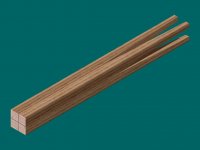I still believe this will end up being cue of the year, and yes that is engravung into ivory.. but it is not used to hide anything it is very clear!
If the results are polled on here and they weren't fairly easy to manipulate (if someone felt so inclined), it would be awfully fun to wager on these things. Maybe set up a vBookie event, just for fun.
This is an unbelievable cue, but I think it's vulnerable...imo it looks a lot like work he's done before (general appearance), despite some obvious differences than are new and off the charts cool.
Hopefully some more monsters will come out between now and then...give this one a run for the money...
Last edited:
